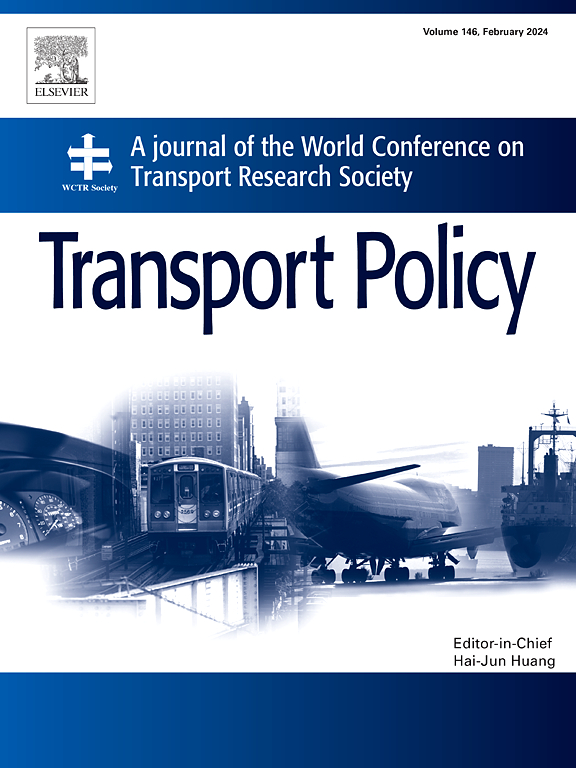Investigating utility-based walking accessibility: New versus old development areas in Hong Kong
IF 6.3
2区 工程技术
Q1 ECONOMICS
引用次数: 0
Abstract
Walking accessibility is a fundamental component of urban design, which plays a significant role in creating livable, sustainable and inclusive cities. This study aims to investigate potential disparities in walking accessibility between new and old development areas. To achieve this, a utility-based walking accessibility measure is developed, incorporating the impacts of street-level walking attributes, the spatial distribution of points of interest (POIs), pedestrians' heterogeneous behavioral preferences and population distribution. Walking accessibility disparity or inequity among different age groups is further quantified using Gini coefficients and Theil indices. The comparative case study focuses on Kwun Tong, an old urban area, and Kai Tak, a new development area in Hong Kong. The results show that the new development area exhibits lower walking accessibility across all age groups and a higher level of inequity for young and middle-aged pedestrians compared to the old development area, while the inequity difference for the elderly is not significant. This disparity can be attributed to the concentration of POIs within a few business clusters and insufficient pedestrian facilities. Additionally, the elderly have the worst walking accessibility among the three age groups. The findings highlight the necessity to incorporate pedestrians’ diverse preferences in planning new development areas to create a pedestrian-friendly environment for all.
调查以实用设施为基础的步行可达性:香港新与旧发展区
步行可达性是城市设计的基本组成部分,在创造宜居、可持续和包容的城市中发挥着重要作用。本研究旨在探讨新旧发展区步行可达性的潜在差异。为实现这一目标,本文结合街道步行属性、兴趣点空间分布、行人异质性行为偏好和人口分布的影响,构建了基于效用的步行可达性测度。利用基尼系数和Theil指数进一步量化不同年龄组间的步行可达性差异或不平等。本研究以香港的旧市区观塘和新发展区启德为个案进行比较。结果表明:与老开发区相比,新开发区各年龄段的步行可达性较低,中青年行人的步行可达性不平等程度较高,而老年人的步行可达性差异不显著;这种差异可归因于poi集中在少数商业集群内以及行人设施不足。此外,在三个年龄组中,老年人的步行可达性最差。研究结果强调,在规划新发展区时,必须顾及行人的不同喜好,为所有人创造一个方便行人的环境。
本文章由计算机程序翻译,如有差异,请以英文原文为准。
求助全文
约1分钟内获得全文
求助全文
来源期刊

Transport Policy
Multiple-
CiteScore
12.10
自引率
10.30%
发文量
282
期刊介绍:
Transport Policy is an international journal aimed at bridging the gap between theory and practice in transport. Its subject areas reflect the concerns of policymakers in government, industry, voluntary organisations and the public at large, providing independent, original and rigorous analysis to understand how policy decisions have been taken, monitor their effects, and suggest how they may be improved. The journal treats the transport sector comprehensively, and in the context of other sectors including energy, housing, industry and planning. All modes are covered: land, sea and air; road and rail; public and private; motorised and non-motorised; passenger and freight.
 求助内容:
求助内容: 应助结果提醒方式:
应助结果提醒方式:


